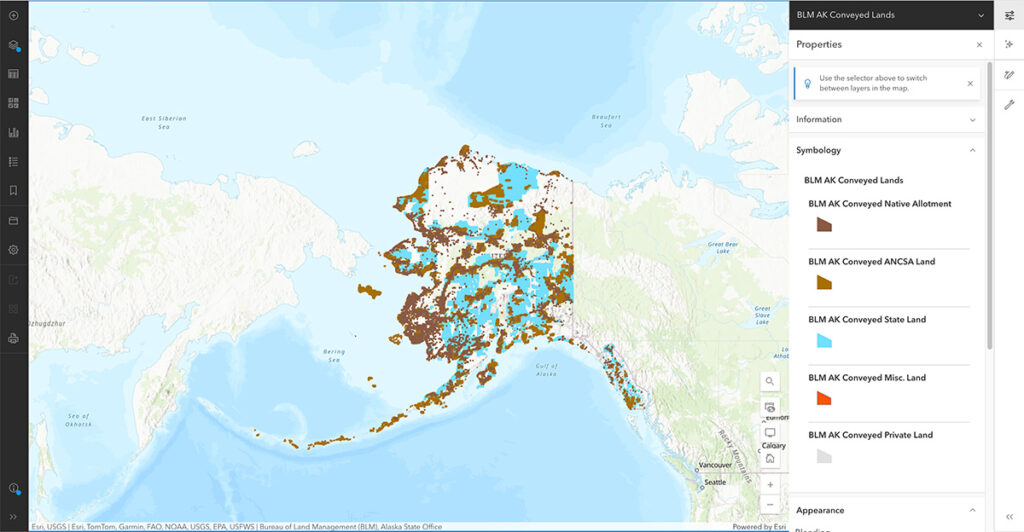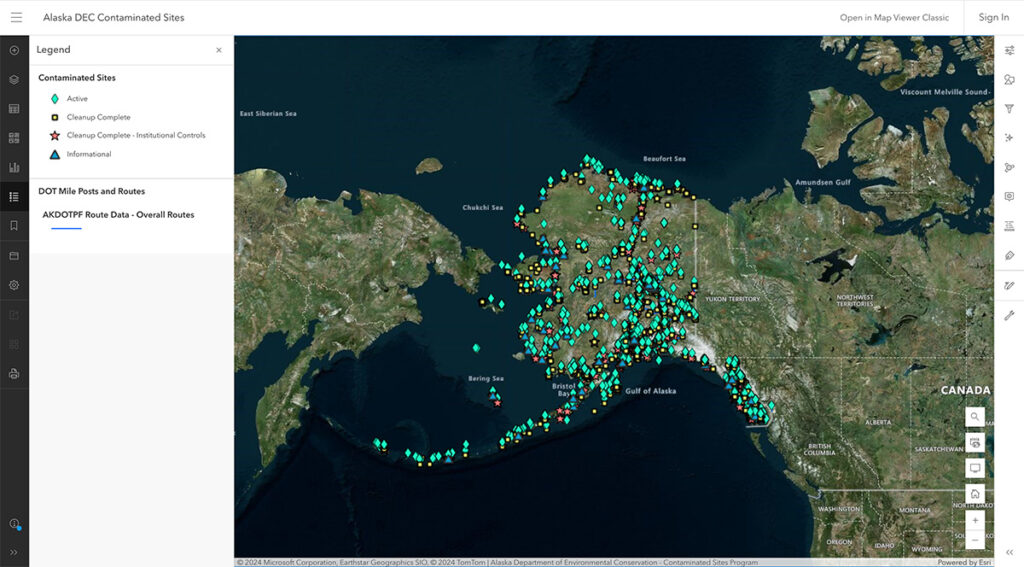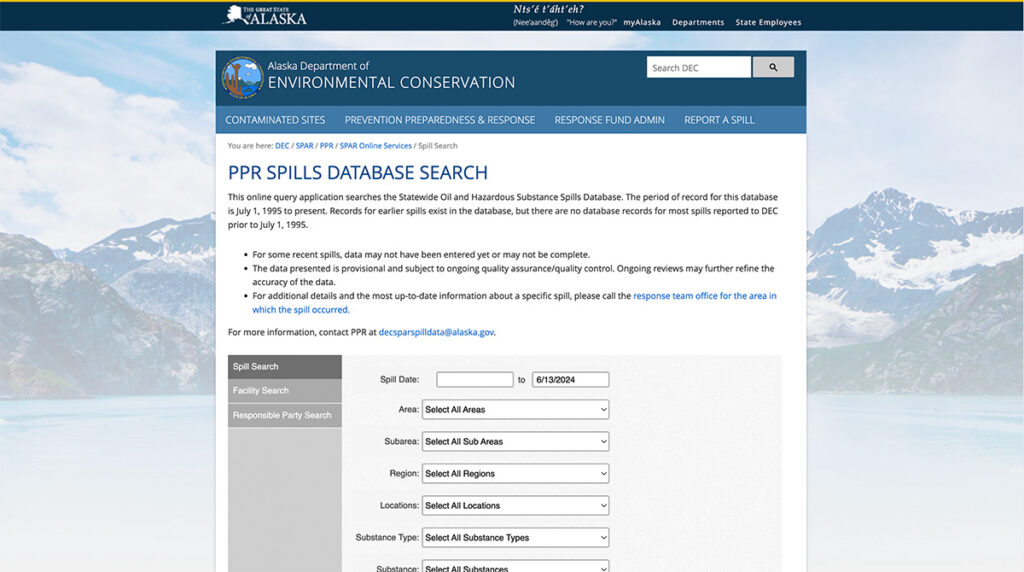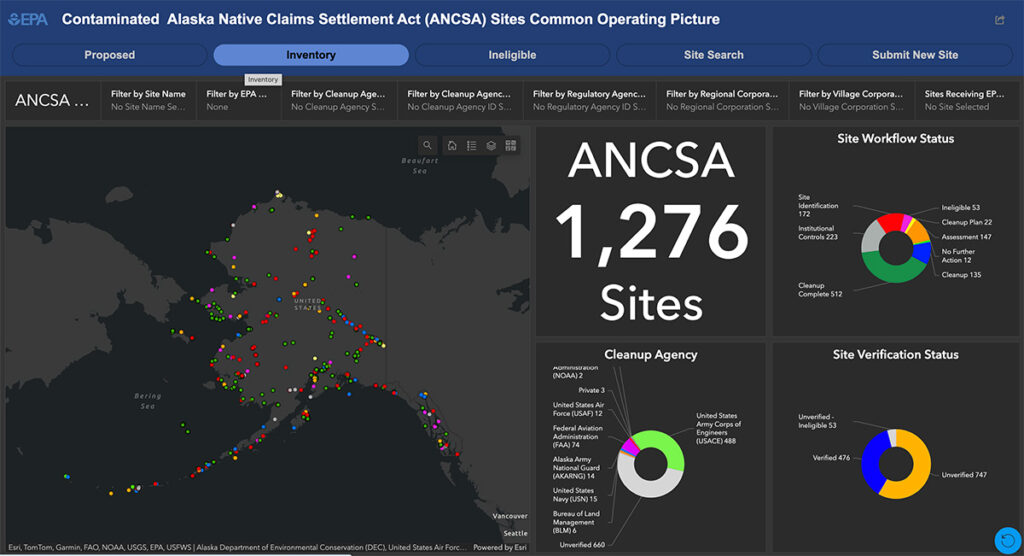Contaminated Alaska Native Claims Settlement Act (ANCSA) Lands

Get Involved
For the first time, funding has been made available to begin to address this issue. On this page, there is information about:
- EPA’s Contaminated ANCSA Lands Assistance Program, which is a cooperative agreement funding program to assess and cleanup ANCSA – conveyed contaminated lands
- The ANCSA Partnership Group, which is a forum where you can be kept up to date on the EPA’s Contaminated ANCSA Lands Program and resources being made available.
- How to request assistance from ANTHC’s Contaminated Site Program on a site within your community
- Outreach and education materials for download and printing including a funding program “cheat sheet”
The next ANCSA Partnership Group Meeting will occur on Wednesday, April 16, 2025, from 10 am – 12 pm in the Nuka Wellness and Learning Center on the ANTHC campus and virtually.
In Person:
Nuka Wellness and Learning Center
ANTHC Campus
4085 Tudor Centre Drive
Anchorage, AK 99508
Virtual:
Join Zoom Meeting
https://anthc.zoom.us/j/98698598578?pwd=Vos6mELsP5hfPW8DHuzuR9wsMpq3nN.1
Meeting ID: 986 9859 8578
Passcode: 799495
ANCSA Partnership Group
Representatives
The Partnership Group consists of representatives from Statement of Cooperation (SOC) agencies (DEC, EPA, DOD, DOI, USFS, USCG, FAA, and ANTHC), ANCSA village and regional corporations, and Tribes.
Goals
The ANCSA Contaminated Lands Partnership Group’s goals were originally oriented in the belief that the group would have to prioritize the sites to work on. With the advent of the EPA’s Contaminated ANCSA Lands Assistance Program, these goals have had to shift. The group is currently a forum for entities to get updates on the EPA’s contaminated ANCSA Lands Assistance Program and provide feedback to state and federal partners.
To learn more or participate in the ANCSA Contaminated Lands Partnership Group, please contact Lisa Griswold, ANTHC Contaminated Sites Program, at lgriswold@anthc.org or (907) 729-5630.
Meetings Archive
2023
-
- ANCSA Partnership Group Meeting #8, (This recording is currently unavailable. Check back soon for updates.)
-
- Presentation PDF, PDF
-
-
- BUILD Act Factsheet, PDF
-
-
-
- ANCSA Partnership Group Meeting #7, Zoom Recording
-
- ANCSA Partnership Group Meeting #5, Zoom Recording: Presentation on the background of the ANCSA partnership group, 2023 Appropriations funding program for ANCSA sites, action plan updates from DEC, ANTHC and EPA and a community feedback exercise
2020
-
- December 16, 2020
ANCSA Partnership Group Meeting #4
View Recording
-
2019
-
- February 14, 2019
ANCSA Partnership Group Meeting #3-
- Overview of partnership group’s formation and history, update on DEC Contaminated Sites Inventory update, overview of BUILD Act liability protection for corporations.
-
-
- Minutes [PDF] | Presentation [PDF]| View Recording: http://anthc.adobeconnect.com/pb8znapiqhlg/
-
-
-
- May 21, 2019
LEO Webinar: Brownfields, ANCSA Contaminated Lands, and What You Can Do-
- This webinar helps shed light on what community members can do about brownfields and new legislation that may help lead to clean-up.
-
-
- Presentation [PDF]| View Recording: https://anthc.adobeconnect.com/_a831472963/pqv0zjgm4j73/?proto=true
-
- May 21, 2019
2018
Upcoming Events
Request ANTHC Assistance
You can also request assistance on doing this site research from ANTHC’s Contaminated Site Program.
Outreach and Education
Funding for the cleanup of Contaminated Sites in Alaska is a complex issue. To help promote understanding of the different contaminated site funding programs and how they intersect with the EPA’s Contaminated ANCSA Lands Assistance Program, ANTHC has developed the below Fact Sheet that describes the different types of funding programs that are available. Fact sheets and brochures for the EPA Brownfields Program, the Contaminated ANCSA Lands Program, and the Native American Lands Environmental Mitigation Program (NALEMP) referenced in the fact sheet are also included below.
- QR Funding Program Fact Sheet
- ANCSA Overview Matrix Fact Sheet
- Brownfields Assist Overview Matrix
- NALEMP Brochure
If you have specific questions, please contact Lisa Griswold at (907) 729 – 5630 or email Lisa at lgriswold@anthc.org.
Clean up the Land: EPA Contaminated ANCSA Lands Assistance Program
Communities can begin to address these sites on their own timeline and with the autonomy to choose their own contractors, workers, and cleanup solutions with the U.S. EPA’s Contaminated ANCSA Lands Program.
To learn more about this funding program please visit the EPA Contaminated ANCSA Lands website or contact Jeff Estes, 907-271-6558, or Mahri Lowinger, 907-271-6334.
To be eligible for the Contaminated ANCSA Lands Program you must have these three things:
- The site must be on ANCSA-conveyed land
- There must be pre-conveyance contamination
- The site must be verified and on the EPA’s Contaminated ANCSA Lands Inventory, also known as the “Common Operating Picture”
If you do not know if you meet the three eligibility requirements above, below are some resources to help with initial research:
If you do not know if the site was on ANCSA-conveyed land, the BLM ANCSA conveyance Webmap is a good place to start looking.
If you do not know if the site is contaminated, you can see if the site is on the ADEC’s Contaminated Sites webmap.
If you do not know if the site is on the EPA’s Contaminated ANCSA Lands Inventory (AKA the Common Operating Picture), you can search for the property on the embedded Common Operating Picture Dashboard below.
Request ANTHC Assistance
You can also request assistance on doing this site research from ANTHC’s Contaminated Site Program.
Learn More
The Alaska Native Claims Settlement Act is a Law unique to Alaska and has had far reaching effects. On this page, you will find information on the history of the Alaska Native Claims Settlement Act and Contaminated ANCSA lands, as well as additional resources
Timeline
Click on the dates below to view the details.
- Time immemorial: Alaska Native People in Alaska
- 1867: Treaty of Cessation
- 1959: Alaska becomes a state
- 1966: State land selection frozen
- 1968: Oil discovered at Prudhoe Bay
- 1971: ANCSA signed
- 1972: AS 46.03.822 imposes liability on polluters
- 1980: CERCLA passed by US Congress
- 1989: AS 46.03.822 strengthened
- 1990: Directive to look at contaminated ANCSA lands
- 1995: Second directive to look at contaminated ANCSA lands
- 1998: DOI issues 1998 report on contaminated ANCSA lands
- 2014: Third directive to look at contaminated ANCSA lands
- 2018: BUILD Act provides liability relief
- 2018: AS 46.03.822 amended to give liability relief
- 2023: Establish Contaminated ANCSA Lands Assistance Program
- Present day: Federal and state laws regarding liability differ




